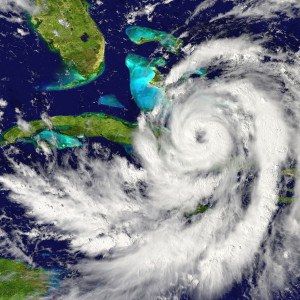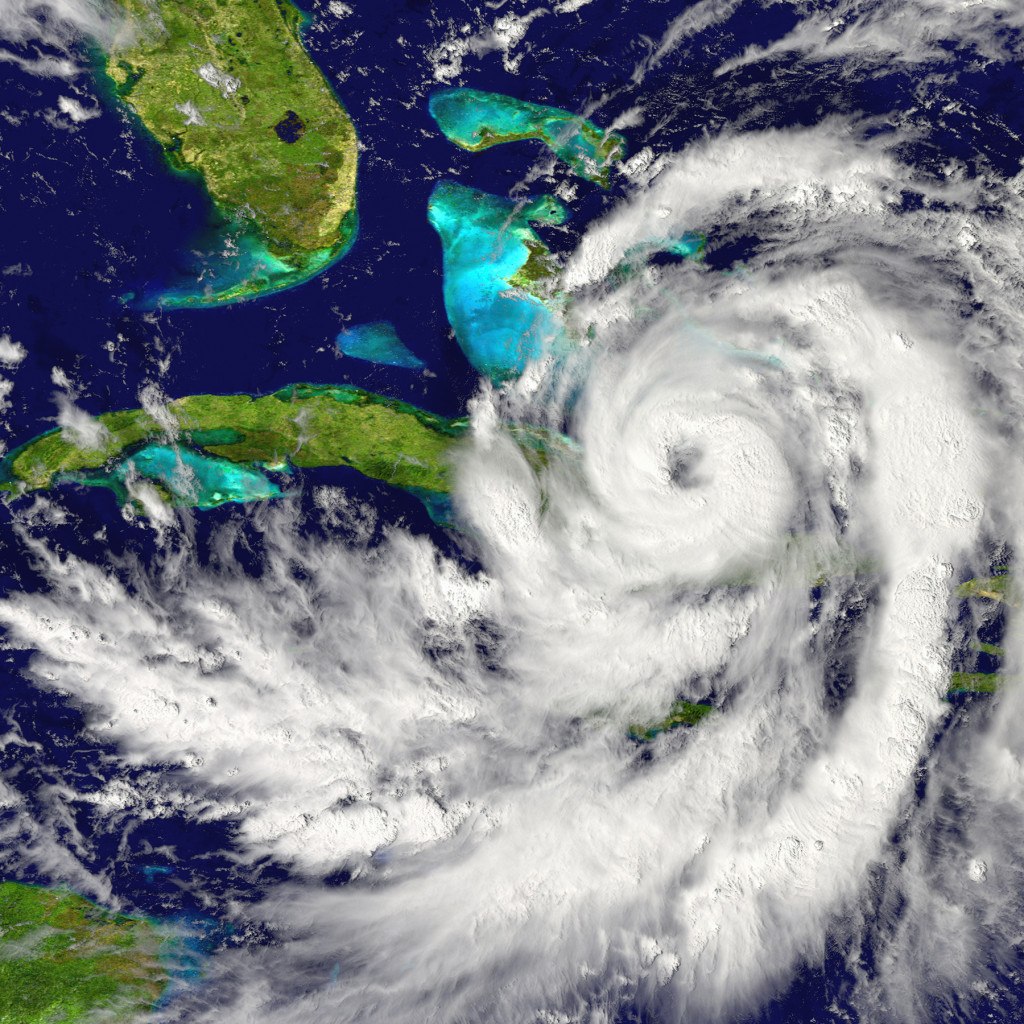With more than 6.6 million homes on the Atlantic and Gulf coasts at risk of hurricane storm surge in 2015, CoreLogic, a global property information, analytics and data-enabled services provider, estimates the total reconstruction cost value (RCV) at nearly $1.5 trillion.
Table 1 – Residential Exposure by Storm Category for the Entire U.S.
| Storm Surge Risk Level (Storm Category) |
Total Homes Potentially Affected | Total Estimated RCV (U.S. dollars) |
|---|---|---|
| Extreme (Affected by a Category 1-5 storm) | 1,651,978 | $393,494,752,074 |
| Very High (Category 2-5) | 1,438,526 | $324,225,419,007 |
| High (Category 3-5) | 1,654,925 | $371,135,087,394 |
| Moderate (Category 4-5) | 1,178,196 | $267,395,972,220 |
| Low (Category 5) | 685,391 | $132,090,242,053 |
| Total | 6,609,016 | $1,488,341,472,748 |
The CoreLogic 2015 storm surge analysis examines risk from hurricane-driven storm surge for homes along the Atlantic and Gulf coastlines of 19 states and the District of Columbia, as well as for 84 metro areas.
Homes are categorized among five risk levels, including Low, Moderate, High, Very High and Extreme. In addition to the number of homes at risk, the analysis provides RCVs, which indicate how much is required to rebuild the property, including labor and materials, and assuming worst-case scenario at 100-percent destruction.
 At the regional level, the Atlantic Coast has more than 3.8 million homes at risk of storm surge in 2015 with an RCV of $939 billion, and the Gulf Coast has just under 2.8 million homes at risk and nearly $549 billion in potential exposure to total destruction damage.
At the regional level, the Atlantic Coast has more than 3.8 million homes at risk of storm surge in 2015 with an RCV of $939 billion, and the Gulf Coast has just under 2.8 million homes at risk and nearly $549 billion in potential exposure to total destruction damage.
Table 2 – Residential Exposure by Coastal Region
| Region | Atlantic Coast Homes | Atlantic Coast RCV (U.S. Dollars) | Gulf Coast Homes | Gulf Coast RCV (U.S. Dollars) |
|---|---|---|---|---|
| Extreme (Affected by a Category 1-5 storm) | 1,018,371 | $264,963,399,509 | 633,607 | $128,531,352,565 |
| Very High (Category 2-5) | 911,091 | $223,821,396,433 | 527,435 | $100,404,022,574 |
| High (Category 3-5) | 860,657 | $212,741,476,684 | 794,268 | $158,393,610,710 |
| Moderate (Category 4-5) | 686,061 | $172,277,118,076 | 492,135 | $95,118,854,144 |
| Low (Category 5) | 332,984 | $65,334,507,800 | 352,407 | $66,755,734,253 |
| Total | 3,809,164 | $939,137,898,502 | 2,799,852 | $549,203,574,246 |
“The number of hurricanes each year is less important than the location of where the next hurricane will come ashore,” said Dr. Tom Jeffery, senior hazard risk scientist for CoreLogic. “It only takes one hurricane that pushes storm surge into a major metropolitan area for the damage to tally in the billions of dollars. With new home construction, and any amount of sea-level rise, the number of homes at risk of storm surge damage will continue to increase.”
Table 3 – State Table (Ranked by Number of Homes at Risk)
| Rank | State | Extreme | Very High | High | Moderate | Low* | Total |
|---|---|---|---|---|---|---|---|
| 1 | Florida | 793,204 | 461,632 | 524,923 | 352,102 | 377,951 | 2,509,812 |
| 2 | Louisiana | 97,760 | 104,059 | 337,495 | 138,762 | 82,196 | 760,272 |
| 3 | New York | 127,325 | 114,876 | 131,039 | 91,294 | N/A | 464,534 |
| 4 | New Jersey | 116,581 | 178,668 | 73,303 | 77,596 | N/A | 446,148 |
| 5 | Texas | 45,800 | 70,894 | 112,189 | 116,168 | 96,253 | 441,304 |
| 6 | Virginia | 94,260 | 115,770 | 98,463 | 84,015 | 27,544 | 420,052 |
| 7 | South Carolina | 107,443 | 57,327 | 65,885 | 46,799 | 30,961 | 308,415 |
| 8 | North Carolina | 73,463 | 51,927 | 48,595 | 40,155 | 37,347 | 251,487 |
| 9 | Massachusetts | 31,420 | 65,279 | 74,413 | 49,325 | N/A | 220,437 |
| 10 | Maryland | 47,990 | 39,966 | 27,591 | 28,975 | N/A | 144,522 |
| 11 | Georgia | 41,970 | 52,281 | 28,852 | 19,190 | 8,465 | 150,758 |
| 12 | Pennsylvania | 1,467 | 45,776 | 37,983 | 32,426 | N/A | 117,652 |
| 13 | Mississippi | 14,809 | 20,643 | 29,387 | 27,507 | 10,588 | 102,934 |
| 14 | Connecticut | 25,292 | 23,656 | 22,230 | 26,529 | N/A | 97,707 |
| 15 | Alabama | 7,403 | 12,707 | 10,182 | 13,749 | 14,086 | 58,127 |
| 16 | Delaware | 11,523 | 10,854 | 13,528 | 13,811 | N/A | 49,716 |
| 17 | Rhode Island | 6,595 | 5,988 | 6,720 | 7,187 | N/A | 26,490 |
| 18 | Maine | 5,159 | 2,753 | 7,368 | 7,211 | N/A | 22,491 |
| 19 | New Hampshire | 2,514 | 3,470 | 4,234 | 2,272 | N/A | 12,490 |
| 20 | District of Columbia | N/A** | N/A** | 545 | 3,123 | N/A | 3,668 |
| Total | 1,651,978 | 1,438,526 | 1,654,925 | 1,178,196 | 685,391 | 6,609,016 |
* The “Low” risk category is based on Category 5 hurricanes, which are not likely along the northeastern Atlantic coast. States in that area have N/A designated for the Low category due to the extremely low probability of a Category 5 storm affecting that area.
** Washington, D.C. has no Atlantic coastal properties, but can be affected by larger hurricanes that push storm surge into the Potomac River. Category 1 and 2 storms will likely not generate sufficient storm surge to affect properties in Washington, D.C.
Table 3 shows that six states account for more than three-quarters of all at-risk homes nationally. Florida has the highest total number of properties at various risk levels (2,509,812), followed by Louisiana (760,272), New York (464,534), New Jersey (446,148), Texas (441,304) and Virginia (420,052). Even though Louisiana has the second most homes at risk of storm surge, only one-quarter of these homes are in the extreme or very high storm surge category due, in large part, to the upgrade and expansion of levees in Louisiana.
“The levee system in and around New Orleans is one of the most extensive in the world,” said Jeffery. “After Hurricane Katrina in 2005, upgrades were planned for the network of levees and pumping stations to reduce the potential devastation from future storms. Upgrades were completed in 2013, and CoreLogic analysis shows a significant number of homes are now protected from all but the higher category hurricanes as a result.”
At the local level, five Core Based Statistical Areas (CBSAs) rank the highest in both number of homes at risk and total RCV. They include New York-Newark, NY-NJ-PA; Miami-Fort Lauderdale-West Palm Beach, FL; Tampa-St. Petersburg-Clearwater, FL; Virginia Beach-Norfolk-Newport News, VA-NC; and New Orleans-Metairie, LA.
Additional findings in the CoreLogic storm surge analysis:
The five states with the highest RCV for homes at risk include: Florida ($491,119,183,016), New York ($177,398,620,779), Louisiana ($162,096,659,527) New Jersey ($126,829,146,685) and Virginia ($91,049,049,641).
The five states (including the District of Columbia) with the lowest RCV for homes at risk include: District of Columbia ($351,443,177), New Hampshire ($3,215,714,570) Maine ($5,807,400,656), Rhode Island ($7,476,741,658) and Alabama ($9,954,390,796).
The five states (including the District of Columbia) with the lowest total number of properties at risk include: the District of Columbia (3,668), New Hampshire (12,409), Maine (22,491), Rhode Island (26,490) and Delaware (49,716).
Virginia Beach-Norfolk-Newport News, VA-NC has the highest percentage of homes (87 percent) at risk of storm surge, but not designated in a FEMA flood zone. Philadelphia-Camden-Wilmington, PA-NJ-DE-MD and Jacksonville, Fla. also top the list at 85 percent and 77 percent, respectively.
The CoreLogic storm surge analysis also complements Federal Emergency Management Agency (FEMA) flood zone information to provide a snapshot of potential damage exposure at the property level, as many properties located outside designated FEMA flood zones are still at risk for storm surge damage. Standard FEMA flood zones are designed to identify areas at risk for both freshwater flooding, as well as storm surge, based on the likelihood of either a 100-year or 500-year flood event. They do not differentiate risk based on storm severity, and as a result, do not accurately define the total extent of potential risk along coastal areas. Homeowners who live outside the FEMA flood zones frequently do not carry flood insurance, given that there is no mandate to do so, and therefore may not be aware of the potential risk storm surge poses to their properties.
To illustrate varying degrees of flood risk exposure, the analysis compares homes that are not located within FEMA 100-year floodplains against the number of homes located in surge inundation zones, as well as those located in both surge and FEMA Special Flood Hazard Areas (SFHA). This data can be found in the full report at:
http://www.corelogic.com/about-us/researchtrends/storm-surge-report
Source: CoreLogic
Was this article valuable?
Here are more articles you may enjoy.


 Congo Sues Apple Alleging ‘Pillaged’ Minerals in Products
Congo Sues Apple Alleging ‘Pillaged’ Minerals in Products  CVS Accused of Illegal Opioid Dispensing in Whistleblower Suit
CVS Accused of Illegal Opioid Dispensing in Whistleblower Suit  Consulting Firm McKinsey to Pay $650M to Resolve Criminal Opioid Probe
Consulting Firm McKinsey to Pay $650M to Resolve Criminal Opioid Probe  Mississippi High Court Tells USAA to Pay up in Hurricane Katrina Bad-Faith Claim
Mississippi High Court Tells USAA to Pay up in Hurricane Katrina Bad-Faith Claim 